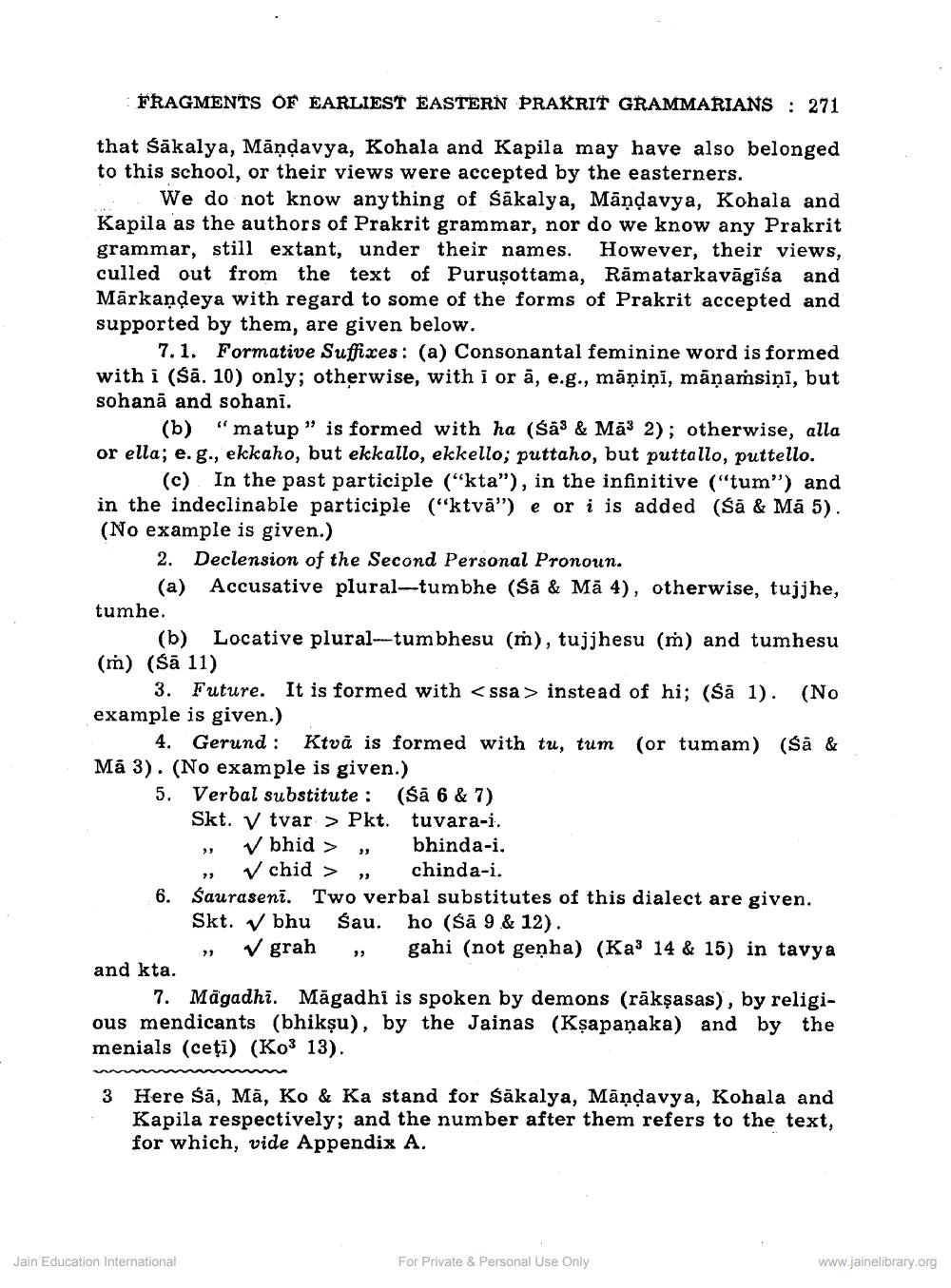Book Title: Fragments of the earliest Eastern Prakrit Grammarians Author(s): Satyaranjan Banerjee Publisher: Z_Mahavir_Jain_Vidyalay_Suvarna_Mahotsav_Granth_Part_1_012002.pdf and Mahavir_Jain_Vidyalay_Suvarna_ View full book textPage 2
________________ FRAGMENTS OF EARLIEST EASTERN PRAKRIT GRAMMARIANS : 271 that Śākalya, Māņdavya, Kohala and Kapila may have also belonged to this school, or their views were accepted by the easterners. We do not know anything of Sākalya, Māndavya, Kohala and Kapila as the authors of Prakrit grammar, nor do we know any Prakrit grammar, still extant, under their names. However, their views, culled out from the text of Puruşottama, Rāmatarkavāgisa and Mārkandeya with regard to some of the forms of Prakrit accepted and supported by them, are given below. 7.1. Formative Suffixes: (a) Consonantal feminine word is formed with i (Sa. 10) only; otherwise, with i or ā, e.g., māņiņi, mānamsiņi, but sohanā and sohani. (b) "matup” is formed with ha (Śäs & Mā? 2); otherwise, alla or ella; e. g., ekkaho, but ekkallo, ekkello; puttaho, but puttallo, puttello. (c) In the past participle ("kta"), in the infinitive ("tum") and in the indeclinable participle ("ktvā”) e or i is added (Śā & Má 5). (No example is given.) 2. Declension of the Second Personal Pronoun. (a) Accusative plural-tumbhe (Śă & Mā 4), otherwise, tujjhe, tumhe. (b) Locative plural.tumbhesu (m), tujjhesu (m) and tumhesu (m) (sā 11) 3. Future. It is formed with <ssa> instead of hi; (Śă 1). (No example is given.) 4. Gerund: Ktvá is formed with tu, tum (or tumam) ($a & Má 3). (No example is given.) 5. Verbal substitute: (šā 6 & 7) Skt. V tvar > Pkt. tuvara-i. , V bhid > „ bhinda-i, ✓ ✓ chid > chinda-i. 6. Sauraseni. Two verbal substitutes of this dialect are given. Skt. V bhu þau. ho (Śā 9.& 12). » V grah , gahi (not genha) (Kay 14 & 15) in tavy a and kta. 7. Magadhi. Māgadhi is spoken by demons (rākşasas), by religious mendicants (bhikṣu), by the Jainas (Kșapanaka) and by the menials (ceți) (K03 13). 3 Here śā, Mā, ko & Ka stand for Śākalya, Māņdavya, Kohala and Kapila respectively; and the number after them refers to the text, for which, vide Appendix A. Jain Education International For Private & Personal Use Only www.jainelibrary.orgPage Navigation
1 2 3 4 5
